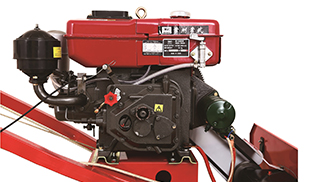Aug . 06, 2024 06:56 Back to list
Exploring the Three Main Categories of Drum Brake Systems and Their Unique Features
Understanding the Three Types of Drum Brakes
Drum brakes have been a crucial part of automotive braking systems for over a century. They traditionally offer reliable stopping power and are simpler and less expensive to manufacture than disc brakes. Understanding the different types of drum brakes can help in selecting the right braking system for specific vehicle requirements. Here, we will explore three main types of drum brakes leading-trailing, duo-servo, and self-energizing drum brakes.
Leading-Trailing Drum Brakes
The leading-trailing drum brake, also known as a single-servo brake, is one of the most common types found in many vehicles, especially light-duty applications. In this design, there are two shoes a leading shoe and a trailing shoe. The leading shoe is positioned in such a way that it faces the direction of wheel rotation. When the brakes are applied, the leading shoe is pushed against the drum surface, which not only creates friction but also causes the shoe to move outwards, increasing the pressure against the drum. This self-energizing effect helps the leading shoe be more effective in generating stopping power.
The trailing shoe, on the other hand, is not positioned to benefit from the wheel's rotation in the same way. However, it still helps in providing additional braking force. Leading-trailing drum brakes provide balanced stopping power and are generally well-suited for vehicles that do not experience extreme braking demands, such as standard passenger cars.
Duo-Servo Drum Brakes
Duo-servo drum brakes are commonly found in larger vehicles and applications where more stopping power is needed. This type of brake utilizes two leading shoes that are positioned in a way that they work together to create a stronger braking force. When the brake pedal is pressed, both shoes are pushed outward against the drum, which causes a more significant friction force compared to leading-trailing systems.
3 types of drum brakes

The configuration of duo-servo brakes allows for a self-energizing effect where the motion generated during braking causes the shoes to press harder against the drum, effectively enhancing the braking performance. This design is particularly beneficial in heavier vehicles or those used for towing, where a higher braking capability is necessary.
Self-Energizing Drum Brakes
Self-energizing drum brakes, while encompassing both leading-trailing and duo-servo designs, highlight the function of energy conservation through friction. This system leverages the vehicle's momentum to enhance braking effort. When the brakes are engaged, the brake shoes are pushed against the drum, and the rotation of the drum itself helps to pull the shoes into a tighter position against the drum surface.
The self-energizing effect allows for reduced pedal effort, meaning the driver doesn’t have to press as hard on the brake pedal to achieve effective stopping power. This feature is particularly beneficial for drivers seeking comfort and ease of use, making self-energizing drum brakes an appealing option in standard passenger vehicles.
Conclusion
Understanding the three main types of drum brakes—leading-trailing, duo-servo, and self-energizing—provides valuable insights into how different braking systems function under various conditions. Each design serves its purpose in the automotive landscape, catering to the specific needs of vehicles, whether they are designed for light-duty city driving or more stringent demands in heavier loads. With this knowledge, vehicle owners can make informed decisions regarding their braking systems, ensuring safety and reliability on the road. As innovation continues in automotive design, the fundamental principles of these drum brake systems remain a testament to engineering that prioritizes performance and efficiency.
-
Scania Brake Drums: OEM Quality for Optimal Safety & Durability
NewsAug.16,2025
-
R.V.I: Advanced Remote Visual Inspection for Precision
NewsAug.15,2025
-
Discover HYUNDA: Innovative Vehicles, Equipment & Solutions
NewsAug.14,2025
-
R.V.I: Unlock Advanced Insights & Real-time Performance
NewsAug.13,2025
-
Kamaz Brake Drum: Durable & Reliable for Heavy Duty Trucks
NewsAug.12,2025
-
Heavy Duty Iveco Brake Drum - Premium Quality & Safety
NewsAug.11,2025
